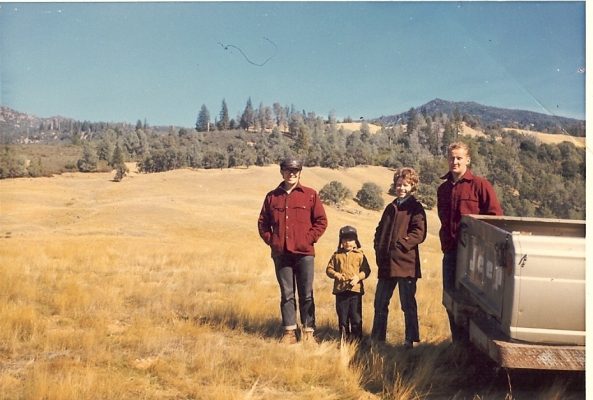Reading Lisa Taddeo’s Three Women, I kept thinking of the artist Jenny Holzer’s statement from her work Truisms: ‘abuse of power comes as no surprise’. In her debut work of non-fiction, Taddeo recounts the stories of three white American women and the men with which they are romantically and sexually entangled. Over a period of eight years, Taddeo spent thousands of hours with Maggie, Lina and Sloane. She talked to them in person, on the phone, over email and text. She lived in each of their communities and built an in-depth picture of their different experiences by reading their diaries and their text messages, and speaking to their friends and families. She was even present for some of the events she describes in the book, though her presence is rarely explicitly felt in the prose.
Maggie, from North Dakota, is in her early twenties. Depending on who you believe, she was either groomed by or readily pursued an affair with her married high-school English teacher, Mr Knodel, when she was seventeen. Six years on from the end of the affair, her life has fallen apart while his appears to be better than ever – he is crowned North Dakota Teacher of the Year. She finally decides to takes him to court and he is acquitted, although a mistrial is declared on two counts and Taddeo’s retelling dwells in the likelihood that there’s been a miscarriage of justice.
Lina is in her thirties. A middle-class housewife and mother from Indiana, she lives with the chronic pain of fibromyalgia and with a husband who refuses to kiss her. Her marital dissatisfaction eventually overrides her traditional beliefs, and she reconnects with an old high-school boyfriend on Facebook, who is also married. She begins an affair with him, enlivened enough by the passion she feels to withstand his monosyllabic noncommittal contributions and general emotional unavailability.
Sloane is a poised, wealthy woman in her forties who runs a restaurant with her husband on the East Coast, where they live with their daughters. She and her husband sometimes have sex with other couples, but mostly her husband chooses men for her to have sex with while he watches or she tells him about it, either in person or via a smartphone. Her feelings about this arrangement are mixed and changeable, until they meet a man who, for a while, completes the triangle perfectly. When his wife finds out, however, the ménage à trois is blown apart, and it makes Sloane think differently again about the implications of the whole set-up.
Maggie, Lina and Sloane’s stories are told episodically in alternating chapters (Lina and Sloane are pseudonyms, but Maggie’s name is unchanged because her story is part of the public record). This form keeps things suspenseful, and weaves their varying experiences of love and lust into a chorus that, in spite of the considerable differences in their circumstances, emphasises the common terrain of desire and its frustration.
When Taddeo began her project it was with the intention of writing about desire, but she had no definite idea of how to go about it. In the book’s prologue she describes how she started by talking to men, but found their accounts of desire disappointingly goal-oriented. The tenor of the female experience, she writes, proved more captivating in its ‘complexity and beauty and violence’. This makes for a discouraging opening to the book. Female desire has long been positioned as a mysterious counterpart to the thrusting need of men, unsettling in its difference, challenging in its complexity, threatening in its potential for insatiability. Sweeping statements like this – especially those working along the gender binary – contribute to the still maddeningly reductive discourse around normative desire and expressions of sexuality. It’s an outdated perspective to take as a starting point and to leave un-interrogated. All desire has the potential to be complex, beautiful and violent, regardless of the gender identity of who is experiencing it. In these women’s stories, we see the troubling heteropatriarchal capitalist dynamics of the broader political world enacted repeatedly both in the home and in the bedroom. And while one of the great strengths of Three Women is its detail and proximity to the beating hearts of its subjects, it’s a shame that the way these stories are framed does little to contextualise or challenge this.
When it comes to telling their own stories, women’s accounts are still scrutinised, written off as hysterical and untrustworthy: movements like #metoo and #ibelieveher have shone a spotlight on the reality of this bias but women still have to fight just to be heard. Paying the kind of close attention to the intricacies and intimacies of female experience that has been granted to male lives for decades is still vital work – but so is handling these accounts responsibly. Taddeo’s authorial voice is mostly an intimate third person, descriptive but direct, but it has the tendency to slip into the breathless territory of a Mills and Boon romance novel. When Lina and her lover first get together Taddeo writes:
She reaches between their bodies and grabs his penis, which feels like a ruby, and rubs it against her inner lips, painting the opening with wetness to make it slide in.
It’s one of several descriptions in the book that tips over into gratuitous lyricism. Maybe their intended purpose is to encourage the reader to ‘lean forward into the guilty attraction’ of the story, in the same way the women’s discussion group Lina attends does when she tells them about her affair. But what they really reveal is that it remains difficult for a book about women and sex to avoid abusive power dynamics, even when the author is sympathetic to the cause. Taddeo is torn between her subject-matter and the power of a good story. New Journalism’s inherent potential to slip into voyeurism renders it an ethically-compromised form: where does the writer’s allegiance lie? With the truth, or with presenting an exciting narrative?
Transgressive love also makes for a great story, something made clear in two of the last decade’s most popular tales of ‘illicit’ desire, both of which are directly name-checked: Stephenie Meyer’s Twilight trilogy and E. L. James’s Fifty Shades of Grey. The latter started out as fan fiction of the former and and both describe a heterosexual power structure that casts the male as dominant and the female as submissive. For Maggie and her teacher, the tortured love between mortal girl and vampire boy in Twilight helps to legitimise their affair: he allegedly gave her a copy doused in his cologne and annotated with post-it notes agreeing with the protagonist (the ancient vampire) Edward’s assertion that age is just a number, and love can transcend any convention.
Fifty Shades of Grey, meanwhile, gives Sloane a new vocabulary for the arrangement between her and her husband. Before reading the novel Sloane’s feelings about their set-up are somewhat ambivalent, but the book introduces her to the term ‘submissive’, and applying it to her situation helps her feel more comfortable in her role:
If previously she’d been simply accommodating her husband’s desire without being true to her own, now Sloane had a new lens through which to see their arrangement. She was a submissive, and a submissive acquiesced to the demands of the dominant. She felt herself craving it more than she had ever done in the past.
With this detail Taddeo makes clear the important role stories can play in making sense of our own desires. It’s unclear, however, whether this new knowledge validates parts of Sloane’s sexuality that she had been taught to repress by a society obsessed with feminine purity, or merely further encases her in another person’s (very male) fantasy. Either way, we see that desire doesn’t just live in the dynamics, it also lives in the retelling and narrativising, whether to oneself or to others. Taddeo shows how literature becomes a means of granting permission or validation for the ways we relate to ourselves via our objects of desire.
In explicitly foregrounding these women’s physical and emotional experiences, Taddeo holds space for the desires that aren’t met as well as those that are, including, importantly, moments of pleasure. This is what she seems to have most wanted: to show that even though the power dynamics are often off, Maggie, Lina and Sloane all have agency too. Taddeo opens a window onto the powerful drive of their individual needs in a way that, when the language doesn’t run away with her, goes some way to demonstrating the nonsense behind gendered perceptions of desire.
It’s telling, however, that in each story the woman’s desire is reactive, emerging in relation or in response to that of the man or men in her life. Maggie’s love for her teacher is likely the result of grooming, and troubles the question of consent; Lina’s overwhelming lust for her lover is fuelled by the coldness of her sexless marriage; Sloane’s participation in group sex appears largely driven by her husband’s fantasies, not her own. All three women transgress the contract of monogamous, marital commitment, but in each case the script is ultimately a conventional one: an affair in which the power lies undoubtedly with the man. These are portraits of women finding ways to live within the confines of the patriarchal system that entraps them, in spite of the differences in their socioeconomic circumstances. Three Women charts the struggle of these women to understand their sexual autonomy within their relationships and the often misogynist, shame-based culture that surrounds them.
Yet Taddeo does manage to capture this struggle with a kind of loving care. It’s clear that it’s empathy and not pity that’s required of her reader. The book asks that we give each woman’s story the same considered attention as its author, and the perspective she holds steady for her reader is one of empathetic non-judgment. We are given insight into the complex double truths and sometimes ambivalent understandings of each woman that are the common terrain of desire, and Taddeo is excellent at describing the particular mix of fantasy projection and self-delusion that often comes into play. The sex is graphic and sometimes uncomfortable to read, particularly when it describes Maggie’s relationship with her teacher. But there is something in its frankness that restores some power to each of the women.
Taddeo wanted to humanise those experiences considered shameful: a teenage girl getting involved with her married teacher; a married housewife having an affair with her (also married) first love; a married woman who has sex with other (sometimes married) partners while her husband watches. The contravention of these marital contracts provides each of the women’s communities with plenty to judge and gossip about. In these stories conventional marriage appears as a bucket with a hole in it, failing to contain the needs of each individual’s desire. It’s an institution that, if left unconsidered, can still belong more fully to society than to the couple themselves. An infraction of its rules remains the perfect fuel to crank up a conservative community’s shame machine. ‘I set out to register the heat and sting of female want so that men and other women might more easily comprehend before they condemn,’ writes Taddeo. The examples she chose demonstrate that in the shadow of everyone else’s moral outrage, it’s still the woman who is deemed responsible and who is most harshly judged.
Taddeo rightly points out that ‘revolutions take a long time to reach places where people share more Country Living recipes than articles about ending female subjugation’, communities that, it’s safe to assume, are probably not reading literature about queering desire. The fact that her call for subjects – she was ‘looking for stories of love and passion’ – essentially brought her stories of pain and inequality is probably true to the experience of many women in traditional heterosexual relationships. There is a lot of sex in this book, but there is not a lot of ‘the joy of sex’. The book’s most powerful conclusion is that the kind of sex it’s possible to have under these conditions is the kind that makes sexual freedom hard to come by.
The judgmental gaze of other women emerges as an equally powerful motivator as the lustful gaze of men. The book’s prologue paraphrases John Berger’s assertion in Ways of Seeing that the internalised male gaze frames the way women look both at themselves and each other. Throughout the book, Taddeo evokes the constant internal awareness of the hierarchy of beauty privilege. Sloane is described as a woman who ‘both does and doesn’t look like a woman people gossip about’; Maggie ‘considers how she’s put on weight. She is not the high school girl she was’. A young Lina realises that:
when you are hot, you have the freedom and liberty to concentrate on the rest of life. You are hot, so you don’t need to take an hour in front of the mirror to look decent. You are hot, so you don’t have to try to make someone love you. You are hot, so you never have to cry, but when you do, it is because somebody has died, and you will look hot doing it.
Internalised misogyny is revealed as a potent force in the lives of all three women. ‘Even when women fight back,’ writes Taddeo, ‘they must do it correctly. They must cry at the right moment and look pretty but not hot.’
Taddeo and her subjects must navigate the burden that women who speak out continue to face, which is the assumption that they speak for all women and not just for themselves. But if, as Taddeo writes in her prologue, the accounts of female desire she encounters might ‘stand for the whole of what longing in America looks like’, then the lack of diversity in the three stories she ultimately chose to include is discomfiting. This is, after all, a book about three white women. In the book’s epilogue, Taddeo gestures towards this uneasy reality when she writes:
Even when women are being heard, it is often only the right types of women who are actively heard. White ones. Rich ones. Pretty ones. Young ones. Best to be all those things at once.
This uncomfortable truth shouldn’t be an afterthought. Rather, the many inequalities determining which human experiences are valued ought to be highlighted in the prologue in order to properly contextualise the lives of Maggie, Lina and Sloane. Taddeo goes on to describe Mallory, a woman from Dominica for whom sex and racial politics are intricately bound together, and whose experience sounds comparatively queer: she has sex with both women and men and seemingly does so for herself, not in response to someone else’s fantasy. But Mallory became superstitious that telling her story would put a new love in jeopardy, and so withdrew from the project. The resulting book is about white, straight-identifying women. That’s fine, but the prologue and epilogue suggest it speaks to a more universal experience, and the concerns of intersectional feminist thought feel notably absent.
Some of Taddeo’s more astute observations are about the difficult task of understanding one’s own needs, and the fear of not having those needs met:
I think about how much I have wanted from men. How much of that wanting was what I wanted from myself, from other women, even; how much of what I thought I wanted from a lover came from what I needed from my own mother.
These thoughts touch on the confusing, unrealistic expectations we can have of romantic relationships, and how the dynamics of childhood show up in adult intimacies. The role that sex and romance play in exposing and healing, or compounding old, unconscious wounds is complex. Heteronormative romance culture encourages women to displace all their primal wants onto their male lovers, which, as Taddeo shows, is ultimately a disempowering act.
Three Women argues that paying close attention to real people can be a loving form of anthropology. The depressing reality, though, is that these stories are neither new or surprising, nor do they show us anything most of us have not read or experienced before. They are portraits of women living out the kinds of romantic scripts that Twilight and Fifty Shades of Grey peddle to female audiences, which create an echo-chamber that reinforces, romanticises and finally excuses patriarchal power. These portraits are recognisable enough to seem unremarkable: this is the ‘vital truth’ about women and desire that Taddeo’s work confirms. ‘There is nothing more profound,’ reads the quote from Charles Baudelaire’s Le Spleen de Paris, the book’s epigraph, ‘than a window lighted by a single candle. What one can see out in the sunlight is always less interesting than what goes on behind a windowpane.’ Three Women shows us that ‘what goes on behind a windowpane’ is in fact likely to be the same as what we can see out in the sunlight – profound structural inequality.




